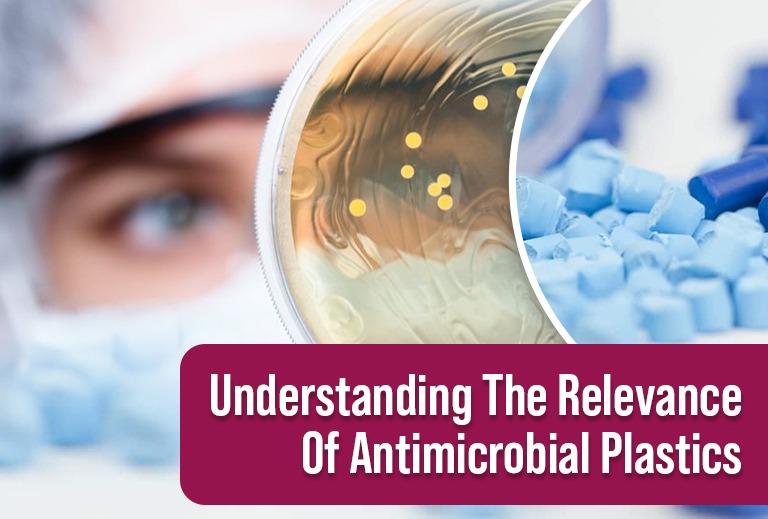Understanding The Relevance Of Antimicrobial Plastics
There is no doubt that plastics have revolutionized our lives by being used in a variety of applications, ranging from packaging, construction, automotive, and electronics to medical devices. It wasn’t long before the increasing concern over the spread of infectious diseases led to the need for materials with antimicrobial properties. And this is where plastic manufacturers stepped in. Antimicrobial plastics can inhibit the growth of bacteria and other microorganisms, helping to prevent the spread of diseases.
These plastics are typically treated with antimicrobial agents that are embedded within the material or applied as a coating on the surface of the plastic. The antimicrobial agents disrupt the cellular function of microorganisms, ultimately leading to their death. Antimicrobial plastics also offer enhanced compatibility with disinfectants. This trait is particularly useful because many disinfectants are harsh on materials and can cause them to degrade over time. Antimicrobial plastics are designed to withstand the effects of repeated exposure to disinfectants, ensuring that they remain effective over time.
There are several types of antimicrobial plastics available in the market today. Some of the most common include:
- Copper-based antimicrobial plastics: Copper has powerful antimicrobial properties and is effective against a wide range of microorganisms. Copper-based antimicrobial plastics have been used in a variety of applications, including medical devices, food packaging, and HVAC systems.
- Silver-based antimicrobial plastics: These plastics are infused with silver ions, which have natural antimicrobial properties. Silver-based antimicrobial plastics are effective against a wide range of microorganisms and have been shown to reduce the growth of bacteria by up to 99.9%.
- Zinc-based antimicrobial plastics: Zinc is a natural antimicrobial agent that has been used in a variety of applications, including coatings for medical devices and food packaging. Zinc-based antimicrobial plastics are effective against a wide range of microorganisms, including bacteria, viruses, and fungi.
- Quaternary ammonium compounds (QACs)-based antimicrobial plastics: QACs are a type of synthetic antimicrobial agent that is commonly used in disinfectants. QAC-based antimicrobial plastics have been shown to be effective against a wide range of microorganisms, including bacteria, viruses, and fungi.
We invite you to attend Plastivision 2023, a prestigious event that will take place from December 7th to 11th at the Bombay Exhibition Centre in Mumbai. This event is an excellent opportunity to meet leading professionals in the plastic industry, expand your network, and gain valuable insights into plastic technology, including antibacterial plastics. We eagerly anticipate your attendance. Get in touch with us if you have any questions regarding the event.
Leave a Reply Cancel reply
Recent Posts
- Understanding The Materials That Are Used To Build Plastic Toys
- All You Need To Know About Food-grade Plastics
- A Glance At The Materials That Boost The Performance Of Plastics
- Understanding The Importance Of Exploring New Business Opportunities In The Plastic Industry
- Understanding The Importance Of Investing in R&D For The Plastic Industry
Categories
- 3D Printing
- AIPMA
- Automation
- Automobile Sector
- Bio Plastics
- Environment
- Innovations In Recycling
- Latest Innovations
- Molds & Dies
- News
- Packaging Industry
- Plastic
- Plastic Application
- Plastic Industry
- Plastic Market
- Plastic Myths
- Plastic News From The World
- Plastic Packaging
- Plastic Products
- Plastic Recycling
- Plastic Solar Cells
- Plastic Toys
- Plastic Waste
- Plastic World
- Plastics
- Plastics And Their Applications
- Plastics In Agriculture
- Plastics In Healthcare
- Plastics In Medical Industry
- Plasticulture
- Processing Machinery
- Recycling Machines
- Robotics
- Uncategorized
- Virtual Reality
Archives
- November 2023 (3)
- October 2023 (2)
- September 2023 (3)
- August 2023 (3)
- July 2023 (3)
- June 2023 (3)
- May 2023 (2)
- April 2023 (2)
- March 2023 (2)
- February 2023 (2)
- January 2023 (2)
- December 2022 (3)
- November 2022 (1)
- October 2022 (1)
- September 2022 (2)
- August 2022 (1)
- July 2022 (3)
- May 2022 (3)
- March 2022 (2)
- February 2022 (1)
- January 2022 (1)
- September 2021 (2)
- August 2021 (3)
- July 2021 (4)
- June 2021 (4)
- May 2021 (3)
- April 2021 (2)
- March 2021 (4)
- November 2019 (8)
- October 2019 (8)
- September 2019 (8)
- August 2019 (8)
- July 2019 (8)
- June 2019 (8)
- May 2019 (8)
- April 2019 (8)
- March 2019 (8)
- February 2019 (11)
- January 2019 (8)
- December 2018 (8)
- November 2018 (12)
- October 2018 (12)

